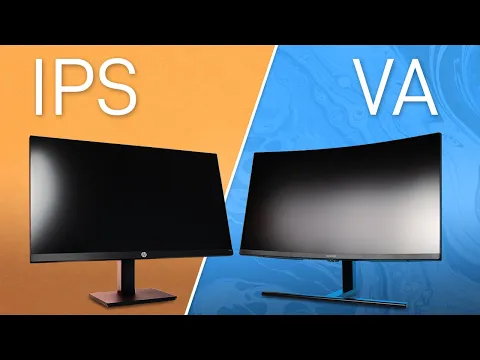In the rapidly evolving world of technology, choosing the right display for your devices is pivotal. Whether you are picking a monitor for your gaming setup, a television for your living room, or a screen for your laptop, the decision between VA (Vertical Alignment) and IPS (In-Plane Switching) displays can greatly impact your overall viewing experience. In this article, we delve deep into the differences between VA and IPS displays, helping you make an informed choice.
VA Displays: Vibrant and Contrasty
VA displays are renowned for their rich and vibrant colors, making them an excellent choice for users who prioritize image quality. Here are some key characteristics of VA displays:
1. Superior Contrast Ratio
VA panels excel in delivering deep blacks and high contrast ratios, which result in images that pop with vividness. This characteristic is especially appreciated by movie enthusiasts and gamers looking for an immersive experience.
2. Impressive Color Reproduction
With a wide color gamut, VA displays reproduce colors accurately, offering a visually pleasing experience for graphic designers and photographers. This feature ensures that every hue is represented with precision.
3. Affordable Price Point
Compared to IPS displays, VA panels are often more budget-friendly, making them an attractive option for those who want top-notch visuals without breaking the bank.
IPS Displays: Stunning Visual Consistency
IPS displays have gained popularity for their exceptional color accuracy and viewing angles. Let’s explore what sets them apart:
1. Consistent Colors from All Angles
One of the standout features of IPS displays is their ability to maintain color accuracy and clarity even when viewed from extreme angles. This makes them ideal for collaborative work environments and setups where multiple people may be viewing the screen simultaneously.
2. Impressive Color Reproduction
IPS panels are known for their color accuracy, making them a preferred choice for professionals in fields such as graphic design, video editing, and content creation. The true-to-life colors ensure that your work is represented faithfully.
3. Wide Range of Applications
IPS displays are versatile and can be used in a variety of settings, including office spaces, creative studios, and home entertainment systems. Their flexibility makes them a popular choice for a wide range of users.
Considering Display Size
In addition to the display technology, another crucial factor to ponder is the size of the screen. Both VA and IPS panels come in a variety of sizes, ranging from compact displays for laptops to large, widescreen monitors for gaming or professional use.
1. Screen Size and Resolution
When selecting a display, take into account the size and resolution that best suits your needs. For tasks requiring intricate details, such as video editing or graphic design, a larger screen with higher resolution can significantly improve your workflow. On the other hand, if you’re looking for a portable solution or a screen for everyday use, a smaller, more compact display might suffice.
2. Gaming Considerations
Gamers should also consider factors like refresh rates and response times. While both VA and IPS displays can offer excellent gaming experiences, some gaming-specific models come equipped with features like higher refresh rates and faster response times. These attributes can make a noticeable difference in fast-paced games.
Additional Features
Beyond the core differences between VA and IPS displays, it’s worth looking into additional features that may enhance your overall experience:
1. Adaptive Sync Technology
Many modern displays, both VA and IPS, incorporate adaptive sync technologies like AMD FreeSync or NVIDIA G-Sync. These technologies help eliminate screen tearing and stuttering, providing smoother gameplay and video playback.
2. HDR Support
High Dynamic Range (HDR) support can significantly improve the visual quality of your content. HDR-capable displays deliver more vibrant colors and a greater contrast range, making movies and games look more lifelike.
Final Thoughts
In the grand battle of VA vs. IPS displays, there’s no one-size-fits-all answer. The “better” choice depends on your specific requirements and preferences. Therefore, before making your decision, consider factors such as your budget, intended use, screen size, and any additional features that align with your needs.
Ultimately, both VA and IPS technologies have their strengths, and you can find exceptional displays in each category. Whichever option you choose, rest assured that modern display technology offers remarkable visual quality that can enhance your computing and entertainment experiences.
So, take your time to evaluate your needs, and may your next display bring you joy and satisfaction in every visual endeavor.
